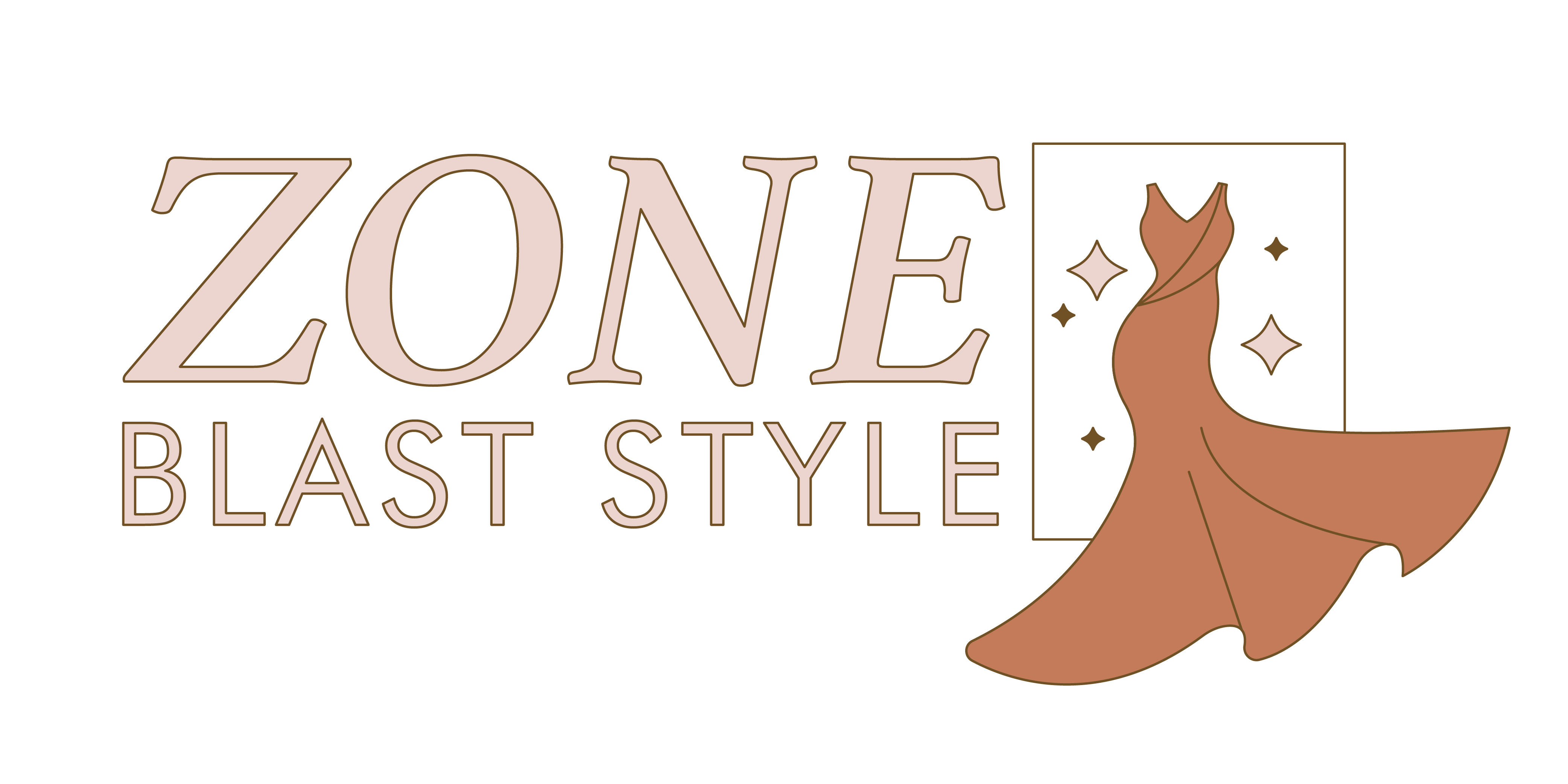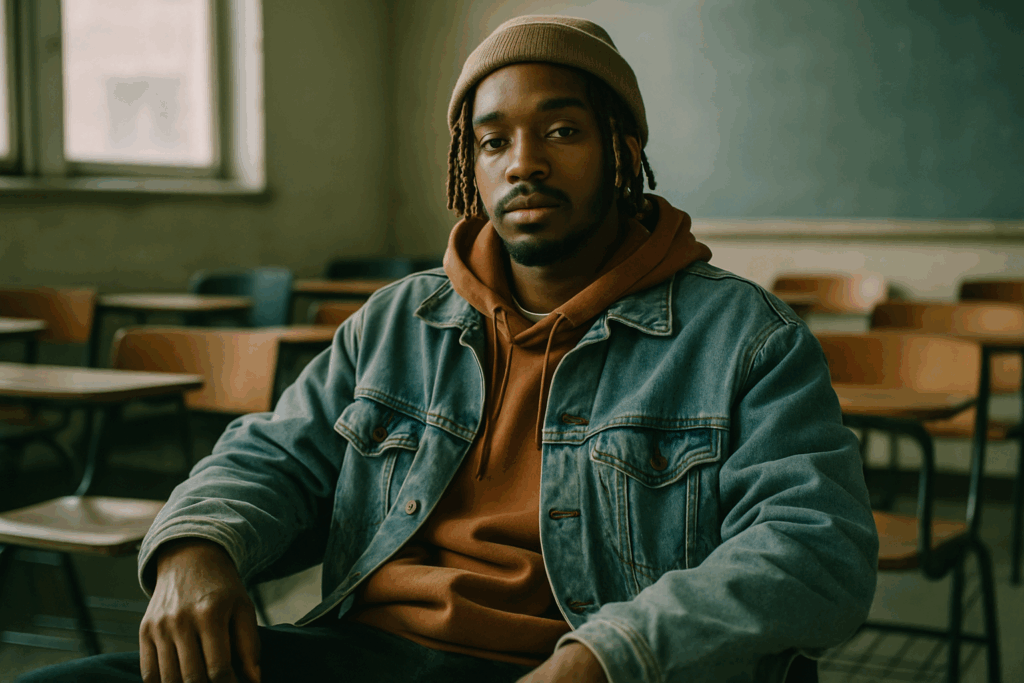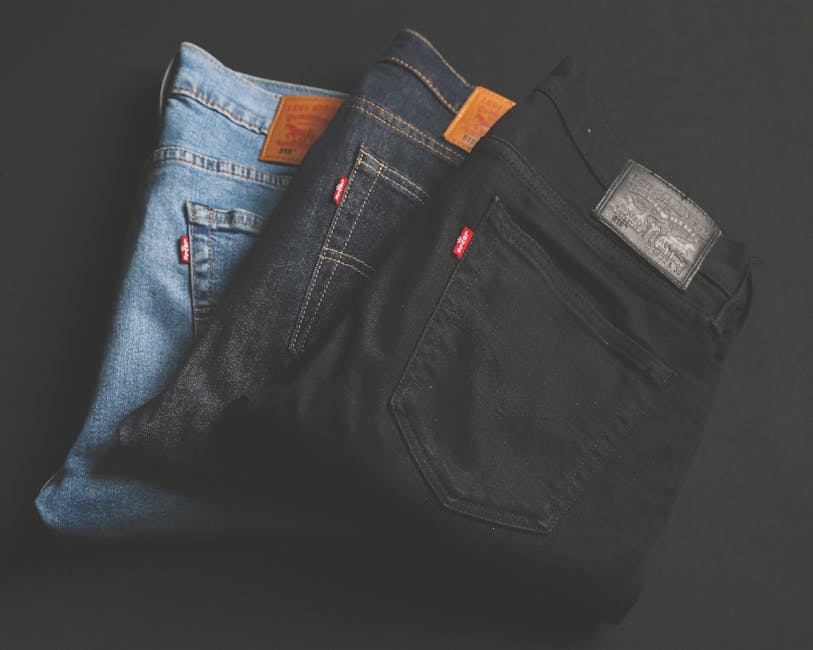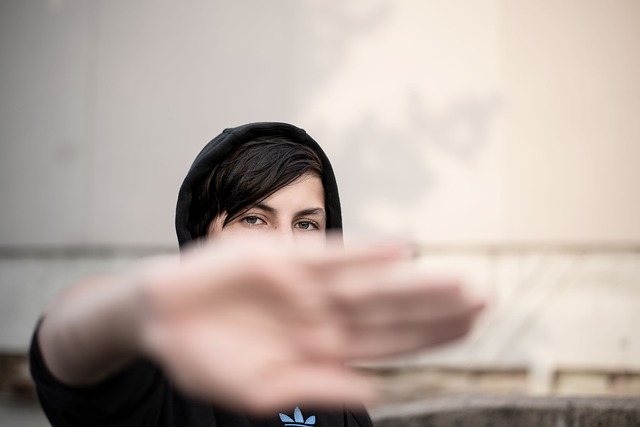Introduction: Streetwear as a Cultural Force
Streetwear didn’t start on the racks of high-end stores or in the pages of glossy magazines. It came from the sidewalk. From skaters, graffiti writers, punk kids, and sneakerheads—each pulling from rebellion, identity, and raw creativity. What began as subculture gear turned into a global language, blending functionality with statement-making intent. Over time, luxury brands took notice, and the lines between underground and designer blurred. Today, streetwear sits center stage, influencing everything from music videos to runway shows.
At the heart of this rise is personality. More than just the clothes, it’s about who’s wearing them—and how. You can’t separate the fit from the figure. Whether it’s a rapper walking out in a custom collab or a designer in ripped jeans and a vintage tee, style lands harder when it feels personal. That’s why people follow icons. Not just for what they wear, but for how they wear it and what it says.
In 2024, with trends changing faster than ever, icons act like anchors. They give meaning to movement. People trust personalities over algorithms. As fashion fragments and reassembles by the week, it’s these figures—creative, unpredictable, often polarizing—who shape what sticks and what fades.
Foundational Figures: The Pioneers
Streetwear didn’t begin on runways—it was built by hands-on creators who turned subcultures into global fashion movements. The early pioneers laid the technical and cultural groundwork for the style we now call streetwear. Their influence continues to be felt in every limited-edition capsule, logo drop, and Instagram flex.
Shawn Stussy: From Surfboards to Street Staples
- Origin: Began in the 1980s as a surfboard shaper in Laguna Beach, California.
- The Pivot: Started putting his surname on T-shirts and caps for customers—creating demand beyond the beach.
- Legacy: Mixed surf, punk, and skate aesthetics into a new lifestyle brand that helped define streetwear’s roots.
- Impact Today: Stüssy remains a respected name, with collaborations that still make waves in modern fashion.
James Jebbia (Supreme): Exclusivity and the Drop Model
- Background: Founded Supreme in 1994 in New York City, catering first to skaters and downtown creatives.
- Business Model: Popularized the “drop”—limited release strategy that turned every product into a cultural event.
- Crossover Success: Bridged underground cool with collaborations involving Nike, The North Face, and even Louis Vuitton.
- Cultural Influence:
- Elevated streetwear into a global commodity.
- Showed how scarcity and subculture could drive mainstream hype.
Nigo (A Bathing Ape): Fashion Through a Hip-Hop Lens
- Roots: Launched BAPE (A Bathing Ape) in Japan in 1993.
- Signature Style: Known for bold camo prints, shark hoodies, and icon-heavy branding.
- Cultural Integration:
- Collaborated with hip-hop legends like Pharrell and Kanye.
- Blended Tokyo street culture with Western music’s flash and swagger.
- Ongoing Influence: Through projects like Human Made and work with Kenzo, Nigo continues shaping global fashion.
Setting the Tone for Modern Streetwear
These foundational figures didn’t just sell clothes—they changed how fashion is produced, distributed, and perceived:
- Created lasting brand cultures that thrive on authenticity and niche appeal.
- Merged aesthetics from youth subcultures with deliberate design thinking.
- Built business models that today’s creators and brands still emulate.
Their legacy is more than logos. They demonstrated that imprinting personal vision onto everyday wear could shape entire movements—and made streetwear a force that never stays in one lane.
The Collaboration Kings
Kanye West didn’t just enter the streetwear world—he restructured the entire business blueprint. With Yeezy, he turned a personal brand into a billion-dollar ecosystem, proving that creators could own both their vision and the verticals. He bypassed gatekeepers, ditched traditional marketing, and made scarcity part of the product. The partnership with Adidas was more than a sneaker collab—it was the first full-scale merger of artist-driven culture and corporate logistics on global terms. Love him or hate him, Kanye forced the fashion world to take streetwear seriously as a business model.
Then came Virgil. As the founder of Off-White and artistic director for Louis Vuitton menswear, Virgil Abloh created a different kind of disruption. His design language borrowed from architecture, art theory, and pop symbolism—but never lost the beat of the street. He didn’t just blur the line between high fashion and streetwear; he erased it entirely. By bringing sneaker drops to Paris Fashion Week and turning Helvetica quotation marks into cultural currency, Virgil proved that fashion could be both elite and accessible. More importantly, he mentored, uplifted, and opened doors—a quietly radical act in an industry built on exclusivity.
Their combined legacy isn’t just about style—it’s about a new path. Art and commerce. Music and design. Luxury and the everyday. For a new generation of creatives, Kanye and Virgil didn’t just change fashion; they redrew the map.
Next-Gen Game Changers
As streetwear becomes increasingly digitized, experimental, and inclusive, a new generation of icons is reshaping the rules. These emerging figures blend fashion with performance art, digital culture, and personal storytelling—striking a chord with younger audiences around the globe.
Kerwin Frost: Performance Meets Play
Kerwin Frost stands out not just for his wardrobe but for how he transforms fashion into an immersive experience. His style blends absurdity, humor, and cultural commentary, making him as much a performance artist as a streetwear tastemaker.
- Known for surreal outfits and over-the-top accessories
- Collaborated with Adidas on experimental designs
- Uses fashion as a tool for self-expression and societal provocation
Aleali May: Fashion Without Boundaries
Aleali May bridges streetwear and high fashion through a lens that challenges traditional gender norms. As one of the few women to collaborate on her own Air Jordan designs, she brings both elegance and edge to a space often dominated by men.
- Stylist, model, and designer with a mix of influences—from South Central to luxury runways
- Known for layering street-centric classics with bold silhouettes
- Actively champions diversity and representation in sneaker culture
Bloody Osiris: Visual Disruption
Bloody Osiris has made a name for himself through a raw and rebellious approach to streetwear. His visual language is unmistakable—part post-apocalyptic couture, part street realism.
- Works closely with Virgil Abloh and has influenced Off-White’s grittier edge
- Instagram is both runway and mood board
- Challenges conformity in both fashion and social identity
Shaping Gen Z Style—Online and Off
These three creatives are not just influencing wardrobes—they’re shaping ideologies. Their styles resonate with Gen Z’s emphasis on identity fluidity, cultural remixing, and authenticity.
- Use platforms like Instagram, TikTok, and live events to reach global audiences
- Inspire young designers to value originality over perfection
- Reflect a generational shift toward fashion as a form of activism and self-branding
Scene Shifters: The Role of Artists
Casual fashion isn’t just a look—it’s a language, and artists like A$AP Rocky, Tyler, the Creator, and Travis Scott are fluent in it. Each has carved out a visual identity that mirrors their sound, using clothing as an extension of their creative voice. Rocky’s luxury grime, Tyler’s preppy chaos, Travis’s dystopian skatewear—these aren’t just outfits; they’re narrative tools.
Co-signs and collaborations carry real weight here. When Travis links up with Nike or Dior, it’s not a gimmick—it’s a cultural signal. Tyler’s Golf le Fleur collections don’t just sell out; they shape what “creative casual” looks like. These aren’t just musicians dabbling in fashion. They’re partial architects of what Gen Z wears to class, to shows, to the grocery store.
Sound matters, too. A fashion label fronted by someone with no sonic culture behind them rarely sticks. These artists built trust through music first—then brought fans along as they pushed into apparel. That foundation adds depth. It explains why a blurry Instagram fit pic from A$AP can spike sales overnight.
For these artists, fashion isn’t merch—it’s persona maintenance. It’s how they stay visible in between releases, how they signal growth without saying a word. Fashion, for them, is part of the artistry, not a side hustle. And that’s why it works.
Global Icons Taking it Local
Streetwear may have started with American subcultures, but it has since evolved into a global dialogue. In 2024, the most exciting voices in streetwear are coming from every corner of the world—each bringing their own cultural roots, urban influences, and community perspectives to redefine what casual fashion looks like.
Regional Powerhouses
Some cities are emerging as new style capitals, thanks to local creatives who use streetwear to tell powerful visual stories:
- Seoul, South Korea: Known for sharp tailoring and playful references to K-pop and Korean heritage, Seoul-based brands are balancing minimalism with audacious flair. The rise of street markets, homegrown labels, and celebrity-endorsed lines make Korea a dominant force in global street fashion.
- London, UK: Rooted in grime, punk, and multicultural energy, London’s streetwear scene thrives on rebellion and constant reinvention. Designers here blend heritage with avant-garde elements, creating looks that feel both immediate and historic.
- Lagos, Nigeria: Afro-streetwear is surging, with Lagos at the center. Fusing traditional prints, hip-hop, and DIY design culture, Nigerian creators are translating global trends into hyper-local expressions of pride and identity.
The Designers Behind the Shift
The faces behind this global shift are far from mainstream—but they’re building clout fast:
- Post Archive Faction (Seoul): A label pushing technical silhouettes with political overtones.
- Corteiz (London): Known for guerilla drops and grassroots loyalty, Corteiz has created a movement, not just a brand.
- WAF. (Lagos): Built on storytelling through design, WAF. (We Are Family) honors West African culture in every piece.
Community Is the New Catwalk
What unites these scenes isn’t just what they wear—it’s how they move. Global streetwear now grows from the ground up, driven by collectives, pop-ups, group styling projects, and artists who blur the lines between fashion and activism.
- Local scenes create their own drip codes
- Streetwear becomes a language of resistance, pride, and vision
- The influence of these communities is now undeniable on even the biggest global stages
Streetwear in 2024 isn’t about where you’re based—it’s about what you represent. And around the world, new icons are representing hard.
Streetwear’s Ongoing Evolution
What started in skate parks and alleyways is now walking the runways of Paris and Milan. Streetwear didn’t just infiltrate fashion—it redefined it. But more than the logos and hype campaigns, it’s the icons behind the brands and looks that have kept the movement rooted in real culture.
The shift from underground to high fashion hasn’t come without its skeptics. Yet, streetwear figures haven’t just adapted—they’ve carried deeper conversations with them. Artists and designers use their platforms not just to sell clothing, but to confront narratives about race, identity, class, and community. Whether it’s Black designers reclaiming space in an industry that once shut them out, or creators using streetwear as a canvas to talk about cultural heritage, the message is finally getting its place next to the merch.
From Virgil Abloh’s Louis Vuitton tenure to local collectives rewriting the style rules in Lagos or Seoul, the idea is clear: streetwear isn’t only about style. It’s about stance. And the front row of fashion week is now a little more honest, a little more real—because the stories behind the stitches matter.
(Explore the bigger picture: The Evolution of Streetwear: From Subculture to Mainstream)
Final Word: Why Icons Still Matter
In an industry known for rapid shifts and fading micro-trends, true icons serve as anchors. They offer context to the chaos and provide a historical throughline from where streetwear started to where it’s heading now.
More Than Style: The Power of Authenticity
Not every popular figure becomes an icon. What sets streetwear leaders apart is a mix of:
- Authenticity: They wear what reflects their identity, not just what’s trending.
- Cultural Awareness: They’re tuned into both their roots and the moment.
- Vision: They push boundaries and introduce new ideas, not just remix old ones.
From Trendsetters to Movement Makers
Icons evolve with the scene—but more importantly, they influence its direction. Whether it’s launching new silhouettes or challenging fashion norms around race, gender, and class, these individuals bring purpose to their platform.
- They link the past, present, and future of streetwear
- They lead movements, not just hype
- They represent communities, global or local, with integrity
Streetwear Is People-Driven
Ultimately, streetwear is defined not just by garments, but by the people who wear them boldly and reshape what style means.
- It’s about self-expression, not seasonal colorways
- It thrives on individuality, resistance, and representation
- And behind every influential fit is a person pushing culture forward
Icons aren’t just symbols of style—they’re catalysts of change. And in 2024, their role matters more than ever.


 Fashion Trends Editor
Fashion Trends Editor
